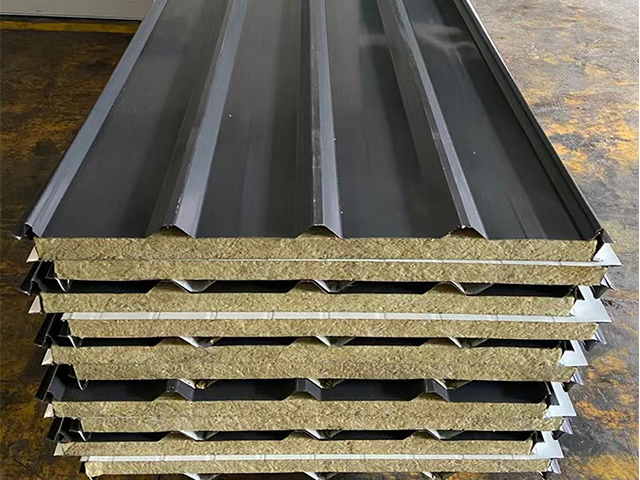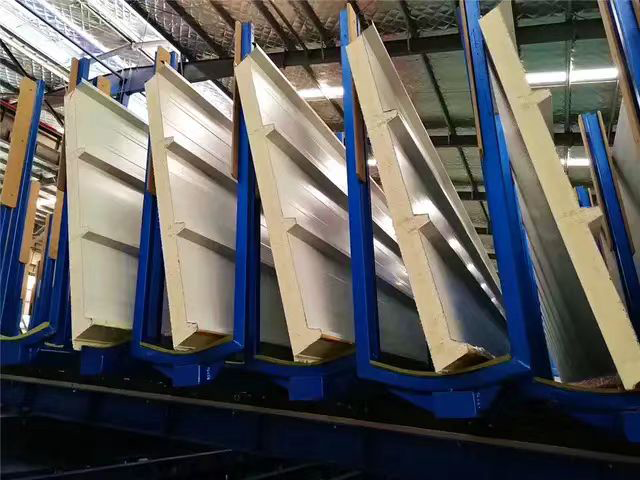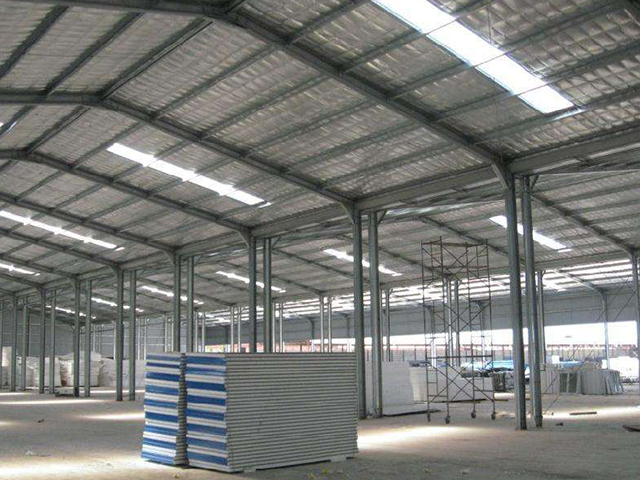صنعت ساخت و ساز توسط پنلهای ساندویچ EPS تغییر کرده است، که شامل دو لایه با یک هسته عایق میشوند. آنها به دلیل وزن کم، کارایی گرمایی و اقتصادی بودن، گزینه خوبی برای پروژههای ساخت و ساز هستند.
سبک و بادوام
تابلوهای ساندویچی پلی استایرن به دلیل ساختار سبک خود دارای مزایای قابل توجهی هستند. وزن کمتر، کار با آنها را در هنگام نصب بسیار راحتتر میکند و معمولاً پروژهها زمان و هزینه کمتری میبرند. برخی افراد ممکن است شگفتزده شوند که چگونه چیزی به این سبکی میتواند در طول زمان به خوبی مقاومت کند. اما این تابلوها در برابر سایش و فرسایش به خوبی پایداری میکنند. این محصول در شرایط آب و هوایی سخت درخشان است، جایی که سایر مواد ساختمانی تمایل به ترک خوردن یا کاملاً از بین رفتن دارند. به همین دلیل، پیمانکارانی که روی ساختمانهای ساحلی یا سازههایی که در معرض دمای بسیار بالا یا پایین قرار دارند کار میکنند، اغلب ترجیح میدهند از تابلوهای پلی استایرن به دلیل قابلیت اطمینان در طولانی مدت استفاده کنند.
ویژگیهای عایق حرارتی
هنگامی که ساختمانها از پانلهای ساندویچی اِیپیاس (EPS) استفاده میکنند، معمولاً کاهش چشمگیری در صورتهای انرژی خود مشاهده میکنند، زیرا این مواد عایق بسیار خوبی در برابر انتقال گرما ارائه میدهند. حفظ دمای مطبوع در اتاقها بسیار آسانتر میشود، زیرا دیگر نیازی نیست سیستم گرمایشی یا کولر به اندازه قبل تلاش کند، و این به خوبی که هسته پانلها دمای موجود را حفظ میکنند. برای مدیران املاک، این موضوع به معنای صرفهجویی واقعی در هزینههای ماهانه خدمات انرژی است. اما فواید مالی فراتر از این است، زاویه محیط زیستی نیز وجود دارد. کاهش مصرف انرژی به طور مستقیم به کاهش انتشار گازهای گلخانهای منجر میشود و این پانلها را انتخابی هوشمندانه برای افرادی میکند که در عین خواستن راهحلهای مقرون به صرفه، به تأثیرات اقلیمی نیز توجه دارند.
هزینه-کارایی
استفاده از پانلهای ساندویچی اِیپیاس (EPS) موجب کاهش مصرف انرژی میشود و در عین حال هزینههای کلی را پایین نگه میدارد. پروژهها به دلیل عدم نیاز به لایههای اضافی عایقبندی ارزانتر اجرا میشوند و همچنین نصب این پانلها بسیار سریعتر از روشهای سنتی انجام میگیرد. این پانلها دوام بیشتری هم دارند، بنابراین مدیران املاک نیازی به تعمیرات یا تعویضهای مکرر در طول زمان ندارند. این پانلها در ساختمانهای مسکونی و اداری صرفهجویی واقعی در هزینهها را بدون compromise کیفیت فراهم میکنند. برخی مطالعات حتی نشان دادهاند که ساختمانهایی که از پانلهای اِیپیاس استفاده کردهاند، میتوانند در ماههای سرد سال حدود ۳۰٪ در هزینههای گرمایش صرفهجویی کنند.
چند منظورهبودن کاربردها
این روزها پانلهای ساندویچی اِیپیاس (EPS) کاربردهای خود را در دیوارها، سقفها و حتی سیستمهای کف پیدا کردهاند. چه چیزی باعث محبوبیت آنها شده است؟ خب، این پانلها تقریباً در هر جایی که نیاز به عایقبندی یا پشتیبانی سازهای باشد، به خوبی کار میکنند. معماران از کار با این پانلها لذت میبرند، چرا که این امکان را فراهم میکنند تا ایدههای خلاقانهای در پروژههای تجاری و ساختمانهای مسکونی به وجود بیاید. سازندگان هم از آنها خوششان میآید چون میتوان آنها را به راحتی در محل کار خرد کرد و شکل داد بدون اینکه روی عملکرد آنها تأثیری بگذارد. از انبارهای بزرگ که نیاز به کنترل دما دارند تا آپارتمانهای جدید و شیک که فضا یک عامل کلیدی است، پانلهای اِیپیاس مرتب این نیازها را دقیقاً برآورده میکنند. این پانلها به یک راهحل پیشفرض در بسیاری از بخشهای ساختمانی تبدیل شدهاند، چون میتوانند به خوبی خود را با نیازهای هر پروژه تطبیق دهند.
Ontwikkelingen actueel en hun invloed
حوزه ساخت و ساز اخیراً تغییرات زیادی کرده و علاقه به چیزی به نام پانلهای ساندویچی EPS افزایش یافته است. این پانلها در همه جا از ساختمانهای تجاری گرفته تا خانههای مسکونی دیده میشوند، چون در شرایط مختلف به خوبی عمل میکنند. پیمانکاران امروزی قطعاً به گزینههای سبز توجه میکنند، که این امر باعث میشود انتظار داشته باشیم پانلهای EPS به مواد استاندارد بسیاری از سایتهای کارگاهی تبدیل شوند. معمارانی که میخواهند تأثیر محیطی خود را کاهش دهند، شروع به استفاده از این پانلها در طراحیهای خود کردهاند و این روند در حال حاضر باعث شده است تا تولیدکنندگان روشهای بهتری برای تولید این پانلها و همچنین بهبود خواص ماده آنها توسعه دهند. برخی شرکتها گزارش دادهاند که مزایای واقعی را تجربه کردهاند، هرچند چالشهایی در مورد هزینه و دسترسی در برخی مناطق هنوز وجود دارد.






